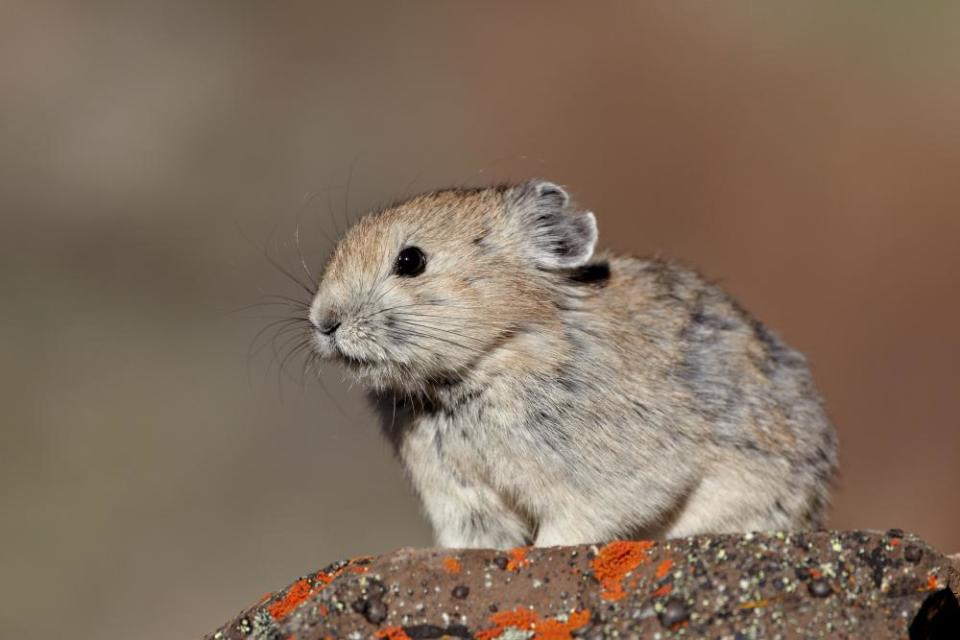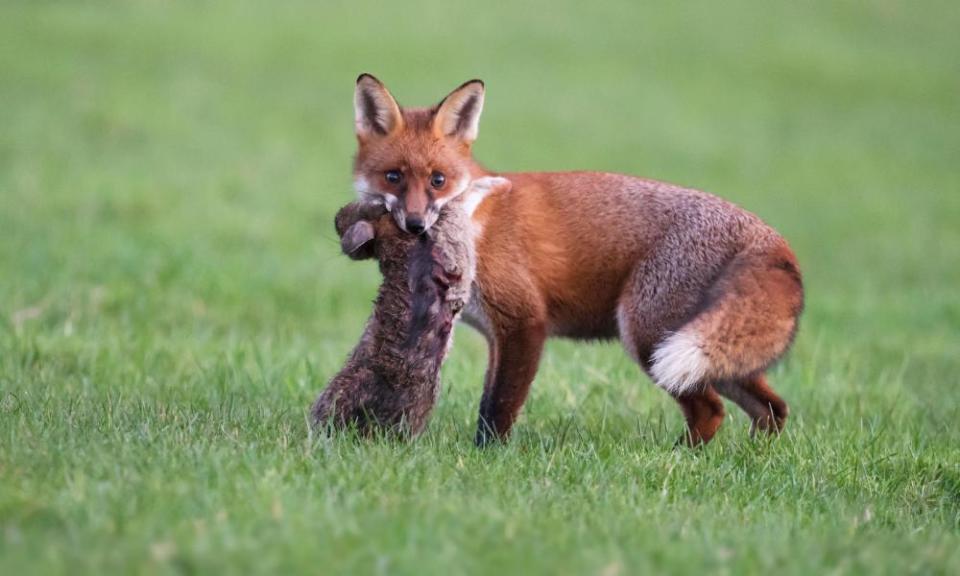The deadly plague that could devastate the US rabbit population

In early March, Gary Roemer was walking in the hills of New Mexico with his dog, Duke. Usually Duke would chase rabbits, but never catch them. This time, though, he brought back a jackrabbit.
Roemer, a wildlife biologist with the University of New Mexico in Las Cruces, initially thought the rabbit was just feeble. But the next day he found a fresh carcass with grisly conditions: it was bleeding from the nose and the anus. “That’s when I thought: this is pretty unusual,” Roemer says.
He froze the carcass to examine later, and soon received an email from a colleague with similar descriptions of more dead bunnies. The culprit was discovered to be rabbit hemorrhagic disease, a virus so deadly it has been likened to a plague.
Related: Increase in invasive species poses dramatic threat to biodiversity – report
The disease, which has a mortality rate as high as 70%, had previously devastated rabbit and hare populations in China, Europe and Australia, first reaching domestic rabbits in the United States in 2018. But in the last few months it has leapt into wild rabbit populations for the first time, hitting seven states. If left unchecked, it could be dire not only for rabbits but for the numerous animals who depend on them for food.
Now scientists are scrambling to figure out how, or even if, it can be stopped.
“This is a pretty big deal from a wildlife management perspective,” says Bryan Richards, Emerging Disease Coordinator, USGS National Wildlife Health Center. “The virus is in a pretty vast area, and we don’t have any tools to use to mitigate the spread or stop it once it’s out in free-ranging populations.”
What is RHDV?
Rabbit hemorrhagic disease virus (RHDV) has been around since the 1980s, when it hit domesticated rabbit populations in China and Europe, eventually killing 140m domestic rabbits in China alone. It was also used in Australia as an attempt to control rabbit populations. In 2010 a new form of the virus, RHDV2, emerged in Europe. The USGS has warned that all rabbits, hares, and distant endangered relatives called pikas could be susceptible in North America.
We don’t have any tools to mitigate the spread or stop it once it’s out in free-ranging populations
Bryan Richards, disease coordinator
The disease causes fevers, bloody noses, and lethargy in rabbits, hares and other similar species. Internally, they begin to bleed and eventually die of liver failure within a week or two of being infected.
The virus is believed to have jumped from domestic rabbits or farms into wild populations, and was first identified in New Mexico, making Roemer one of the first people to see the effects. Anne Justice-Allen, a wildlife veterinarian with the Arizona Game and Fish Department, has watched the disease bound across parts of her state, while also leaping into other places including Utah and Palm Springs, California.

Richards says the domesticated rabbits taken to shows or given out as Easter presents could be part of the spread. She points out that owners don’t often take their rabbits to the vet, making the disease hard to spot, and suspects the virus could be spreading when owners bury a dead rabbit at home. “And if a rabbit dies, they take it to their backyard and toss it out,” she says “Biting flies and insects could spread it mechanically from a carcass.”
The virus is incredibly persistent in the wild, studies show. It can survive for months, and carcasses have enough virus to transmit for more than 20 days, meaning anything visiting the carcass (predators, flies) can spread it easily. And it can withstand high heat – it’s still transmissible for several days even in 120F (49C), and can last for three months in dried feces.
“People have learned a lot about transmission of the novel coronavirus recently,” says Hayley Lanier, a mammalogist at the University of Oklahoma. “If you wash your hands well the coronavirus is quite weak. This virus is on the other end of toughness.”
The disease only affects lagomorphs: rabbits, hares and their cousins the pikas. There is no evidence that it can spread to other animals or humans. Experts say people should be careful about rabbit shows, farms or other places where many rabbits are crowded together – as they may be spots where the disease is spreading in captive populations. New rabbits should be quarantined for 14 days, and there is no vaccine available to veterinarians in the US or Canada.
Can anything be done?
The virus’ hardiness and transmissibility has led biologists to a stark conclusion: there’s not a lot they can do now that it’s in the environment. “It’s likely going to burn through and we hope for the best with what is left,” says Lanier.
The hope is that some rabbits with genetic resistance will be able to reproduce like, well, bunnies. Some species also seem to fare better: Justice-Allen says the desert cottontail, which are smaller, slower and have a white cottony tail, tends to get less sick compared to the blacktailed jackrabbit – a larger species of hare that can run at 40mph. The species that Lanier worries most about are threatened species such as pikas and pygmy rabbits in the west, whose smaller population are far less likely to include the genetic variations that make them less susceptible.
Mass die-offs also impact species up the food chain. From coyotes to kit foxes to raptor birds, many predators dine on rabbits (one recent study in suburban Los Angeles found rabbits were found in 48.5% of coyote poop). In Portugal, when a large outbreak of the virus killed off 60 to 70% of rabbits, the local lynx and eagle populations also dropped by half.

While some predators can just switch food sources, Richards points out that there aren’t a lot of options for species living in the desert, where some of these rabbits are dying. However, he adds it is encouraging that some bunnies have survived even in areas where massive amounts of carcasses have been found – a sign that some resistance may be building.
Scientists in Portugal are working to create an oral vaccine that could be incorporated into bait for wild rabbit populations there. In California, the Oakland Zoo is working to breed endangered rabbit species to have an insurance population in case the mass die-offs threatened the future of a species, Lanier says. While there is a sense that all lagomorphs breed prolifically, the reality is that many are among the rarest and most endangered of all mammals – and important to conserve.
Meanwhile, Roemer is still using Duke’s help to find carcasses in his neighborhood, though there seem to be fewer and fewer rabbits these days. “We still don’t know how this population will recover,” he says.

